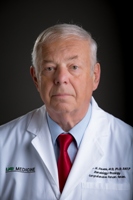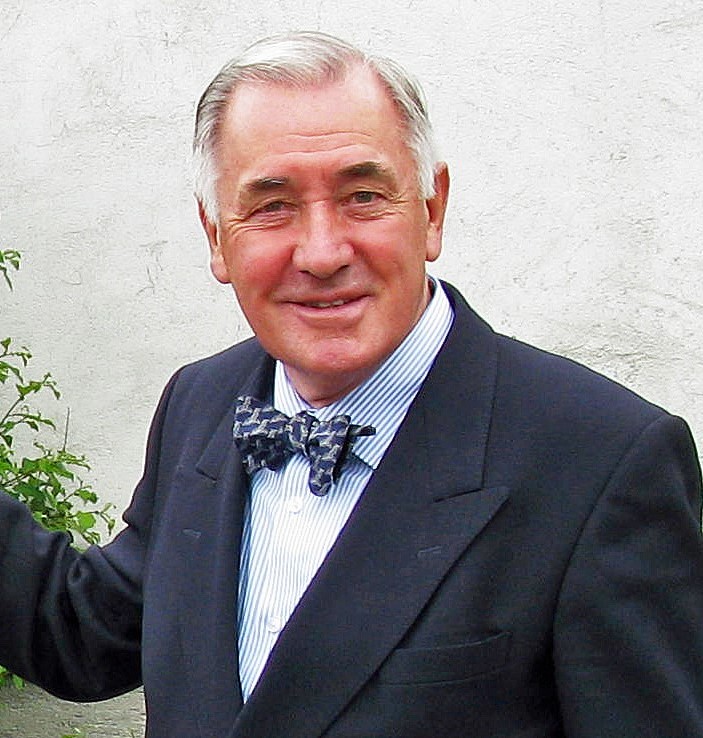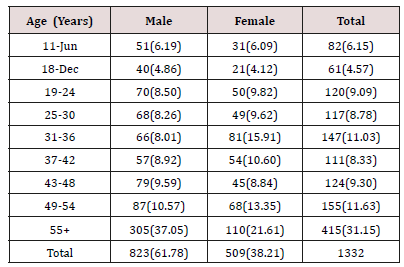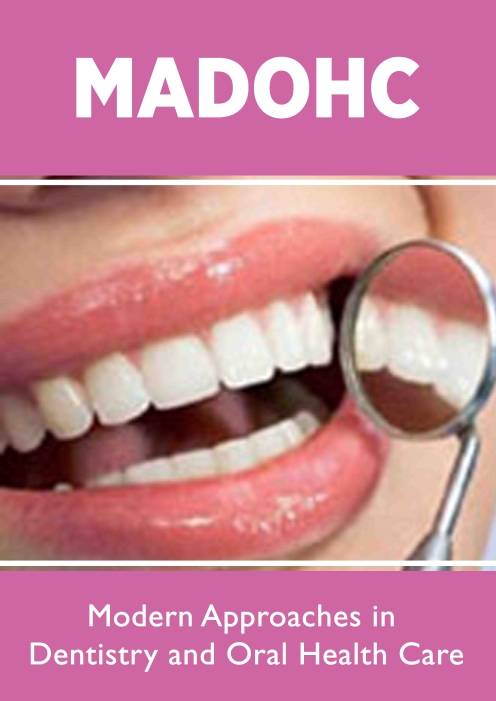
Lupine Publishers Group
Lupine Publishers
Menu
ISSN: 2637-4692
Research Article(ISSN: 2637-4692) 
Fare Well to Tooth: A Hospital Based Study to Determine the Main Cause for Tooth Extraction Volume 3 - Issue 5
Rahul R. Bhowate1* and Mrunal G. Meshram2
- 1Department of Oral Medicine and Radiology, Sharad pawar dental college and hospital, sawangi, Maharashtra. India
- 2Department of Oral Medicine and Radiology, Sharad pawar dental college and hospital sawangi, Maharashtra. India
Received:August 02, 2019; Published: August 23, 2019
Corresponding author:Dr. Rahul R. Bhowate Department of Oral Medicine and Radiology, Sharad pawar dental college and hospital, sawangi, Maharashtra. India
DOI: 10.32474/MADOHC.2019.03.000173
Abstract
Dental Surgeons play an important role in prevention of periodontal disease and caries. Good oral health is supposed to be the indicator of general health. Tooth mortality is directly related to the prevalence of periodontal disease and dental caries. In India, prevalence of periodontal disease is high and the only main cause of extractions [1-4]. But other studies carried out in various parts of India clearly showed a high incidence of caries involving almost the entire population [5-8]. The purpose of this present study was to determine the apparent reason for tooth extraction in hospital based study.
Keywords:Extraction; Dental caries; Periodontal disease; Trauma
Materials and Methods
Prospective study has been carried out for the cause of tooth extraction, in Sharad Pawar Dental College and Hospital, Sawangi (Meghe), Wardha, Maharashtra from 25th June 09 to 30th December 09.
The cause for tooth extraction was determined in the following way.
a) Caries: Whenever the primary reason is caries and/or its associated complication, e.g. failed endodontic treatment, secondary caries involving periapical tissues.
b) Periodontal Disease: Where severe gingival recession, loose tooth, periodontal abscess, or when periodontically involved tooth is extracted for prosthetic rehabilitation.
c) Where tooth is fully or partially impacted, traumatized noncarious tooth, over retained deciduous tooth, supernumerary teeth.
d) The data was analysed in respect of age, sex and type of tooth extracted.
Results
A total of 1332 individuals were analysed for the cause of tooth extractions. There was significantly highest percentage of extractions in male patients (61.78%) compared to female patients (38.21%) (Table 1). The age group 55 and above presented highest number of patients for extracted teeth (31.15%) (Table 1). The periodontal disease was the most common reason for tooth extractions (52.17%). Dental caries was the second most cause for tooth extractions (43.16%) (Table 2). When the entire sample was considered, under 42 age group, caries was by far the most prevalent reason for tooth extractions, but over the age of 42, periodontal disease became the main cause of tooth extraction (Table 2) The highest periodontal extraction value (56.11%) was seen in age group 55 and above, where individuals experienced significantly fewer caries extractions (3.65%) than periodontal ones. A total of 1991 teeth were extracted in 1332 individuals. Molar and premolar presented 96.57% of the carious teeth extracted. More carious teeth were extracted from lower jaw (52%) than the upper one (48%). There were more anterior teeth extracted for periodontal reasons from lower jaw (97.60%) (Table 3). Among the teeth extracted for reasons other than caries and periodontal disease, upper anterior teeth were the most numerous (13.90%). These upper anterior teeth were extracted as they were either over retained primary teeth or affected from trauma. Very few third molar extractions were done. Percentage of periodontal disease and caries teeth extraction was high in male individuals (Table 4).
Discussion
The method utilized in present study is unique in that it is a prospective study, involving single central source of diagnosis. Previous studies [9,10] used the examination of extracted teeth. Cahen et al [11] followed the postal survey of dentists. The periodontal disease was responsible for maximum extraction of teeth (60.93%) in 52.17% of the individuals, which is similar to previous studies conducted in India [1-4]. Studies conducted outside India have also reported periodontal disease as the main etiological factor for extractions after 40 years of age [12-14]. Number of extracted teeth due to periodontal disease in male individual was 64.13% while in female it was only 35.87%. This was thought to be due to high prevalence of betel nut, pan and tobacco habit in male individual. Bhowate [15] et al and Davies [16] have proved that betel nut, pan and tobacco chewing and smoking have been associated with increased periodontal disease. In the present study, caries was the main reason for tooth extraction below 42 years. Similar findings were recorded in Swedish [10] and French [11] study. Molar represented 54.97% of the total teeth extracted for caries and 43.03% of the teeth for periodontal extractions, which is similar to Cahen [11] study in France.Molars accounted for 64.20% of tooth loss due to caries in a study conducted by Dosumu [17].
Following Conclusions can be Drawn from the Present Study
a) Periodontal disease was a major cause for extraction of teeth in whole sample.
b) Caries was the main reason for extraction in patients under 42 years.
c) Periodontal disease was a main reason for tooth removal in patients over 42 years.
References
- Subramanian V (1951) Cause for the extraction of teeth amongst hospital patients. J Indian Dent Assoc 23: 5-6.
- Lal D, Sing Jand Khanna SL (1958) Cause for the extraction of teeth. J Indian Dent Assoc 30: 75-77.
- Mehta FS, Sanjana MK, Shroff BC, Doctor RM (1960) An analysis of periodontal disease as a cause of tooth loss. J Indian Dent Assoc 32: 71-76.
- Mathur MN, Nath S (1968) Tooth Mortality. An analysis of extraction causes. J Indian Dent Assoc 40(8): 213-215.
- Chawla HS (2002) Prevalence of Dental caries in India. J Indian Soc Pedod Prev Dent 20(4): vi-vii.
- Mandal KP, Tewari AB, Chawla HS, Gauba KD (2001) Prevalence and severity of dental caries and treatment needs among population in the Eastern states of India. J Indian Soc Pedod Prev Dent 19(3): 85-91.
- Tewari S (2001) Caries experience in 3-7 year old children in Haryana (India). J Indian Soc Pedod Prev Dent 19(2): 52-56.
- Sing DK and Sing RP (1981) Prevalence of dental caries in school going children of Patna. J Indian Dent Assoc 53: 267.
- Bouma J, Schaub RMH, Van de Poel ACM (1985) Periodontal starus and tooth extraction in a medium sized city in the Netherlands. Community Dental Oral Epidemiol 13(6): 323-327.
- Lundquist C (1967) Tooth mortality in Sweden. A stastical survey of tooth loss in Swedish population. Acta Odontal Scand 25(3): 289-322.
- Cahen PM, Frank RM , Turlot JC (1985) A survey of the reasons for dental extractions in France. J Dent Res 64(8): 1087-1093.
- Quetish Taani DS (2003) Periodontal reasons for tooth extractions in an adult population in Jordan. J Oral Rehabil 30 (1): 110-112.
- Ong G, Yeo JF, Bhole SG (1996) A survey of reasons for extractions of permanent teeth in Singapore. Community Dent Oral Epidemol 24 (2): 124-127.
- Haddad I, Aaddadin K , Jebrin S , Maan m , Yassin O (1999) Reasons for extraction of permanent teeth in Jordan. Int Dent J 49(6): 343-346.
- Bhowate RR, Jawle SS, Rao SP (1991) Epidemiology of oral premalignant lesions in rural areas of Wardha district. Oral Oncology 2: 24-27.
- Davies GN (1940) Social customs and habits and their effects on oral diseases. J Dent Res 42: 209.
- Dosumu OO, Denloye OO (1999) Pattern of permanent tooth loss in Nigerian children and their prosthetic replacement. Afr J Med Sci 28(1-2): 31-3.

Top Editors
-

Mark E Smith
Bio chemistry
University of Texas Medical Branch, USA -

Lawrence A Presley
Department of Criminal Justice
Liberty University, USA -

Thomas W Miller
Department of Psychiatry
University of Kentucky, USA -

Gjumrakch Aliev
Department of Medicine
Gally International Biomedical Research & Consulting LLC, USA -

Christopher Bryant
Department of Urbanisation and Agricultural
Montreal university, USA -

Robert William Frare
Oral & Maxillofacial Pathology
New York University, USA -

Rudolph Modesto Navari
Gastroenterology and Hepatology
University of Alabama, UK -

Andrew Hague
Department of Medicine
Universities of Bradford, UK -

George Gregory Buttigieg
Maltese College of Obstetrics and Gynaecology, Europe -

Chen-Hsiung Yeh
Oncology
Circulogene Theranostics, England -
.png)
Emilio Bucio-Carrillo
Radiation Chemistry
National University of Mexico, USA -
.jpg)
Casey J Grenier
Analytical Chemistry
Wentworth Institute of Technology, USA -
Hany Atalah
Minimally Invasive Surgery
Mercer University school of Medicine, USA -

Abu-Hussein Muhamad
Pediatric Dentistry
University of Athens , Greece

The annual scholar awards from Lupine Publishers honor a selected number Read More...





